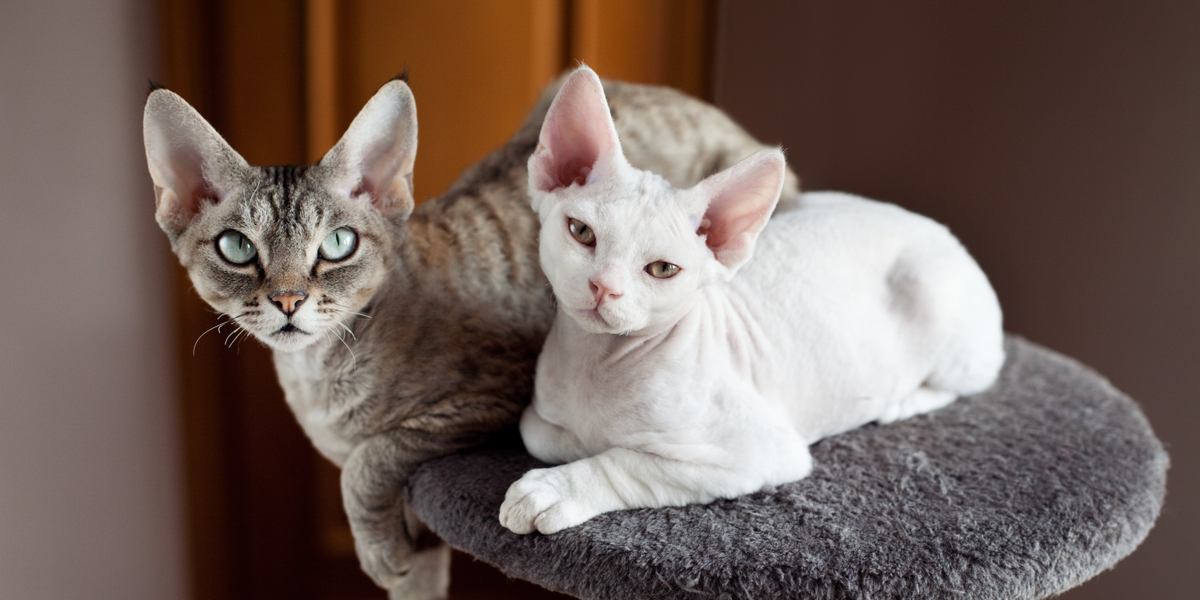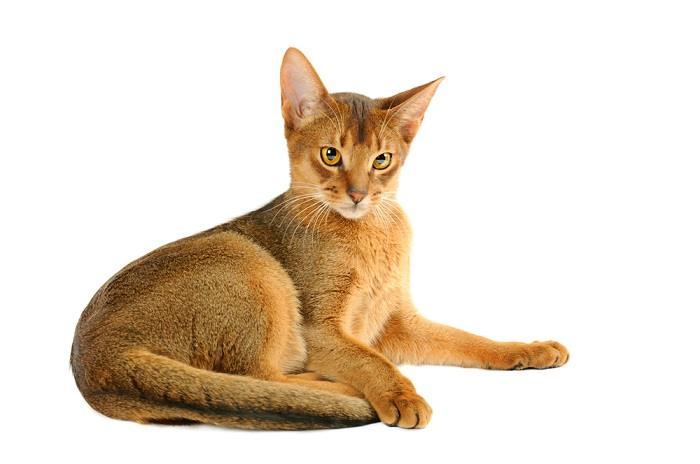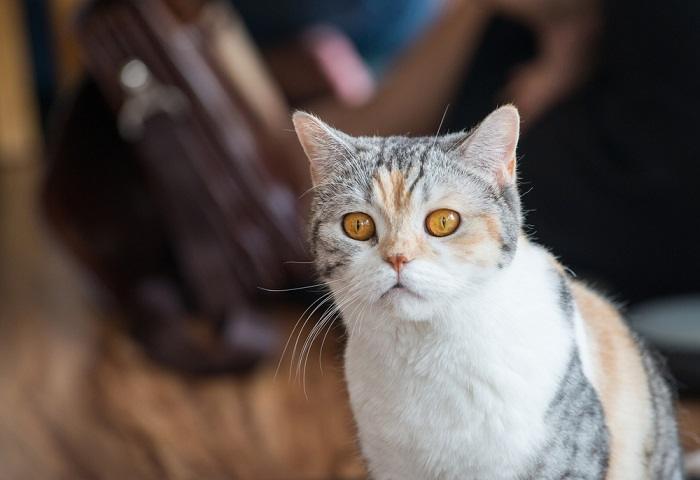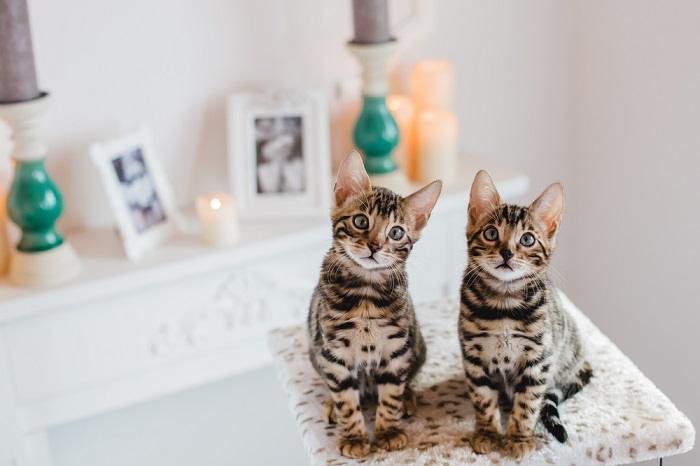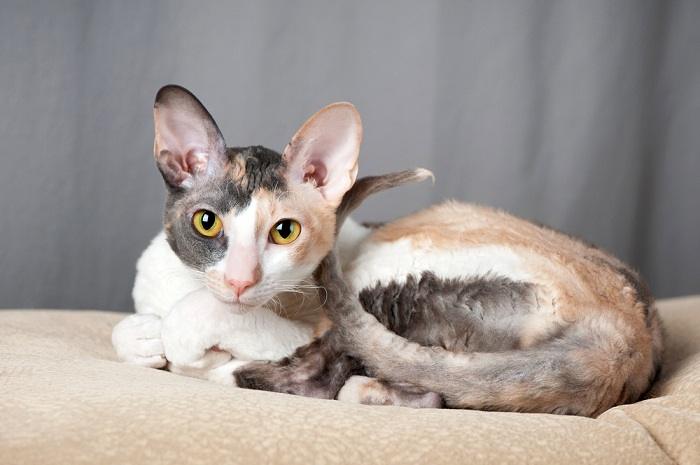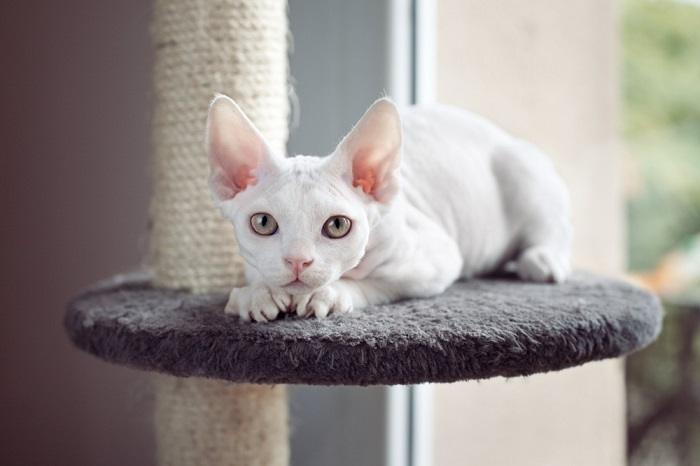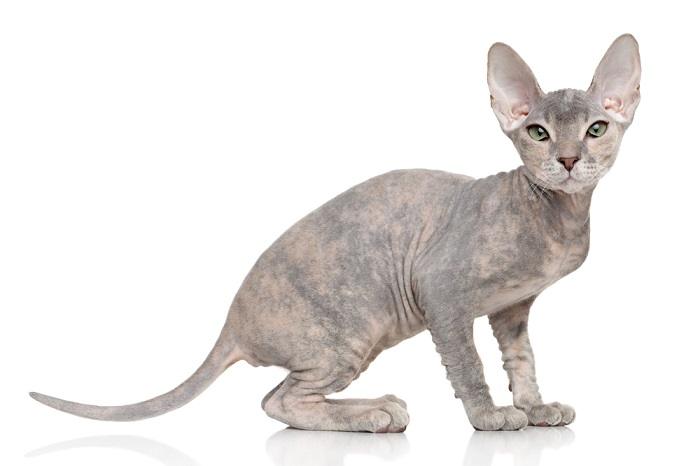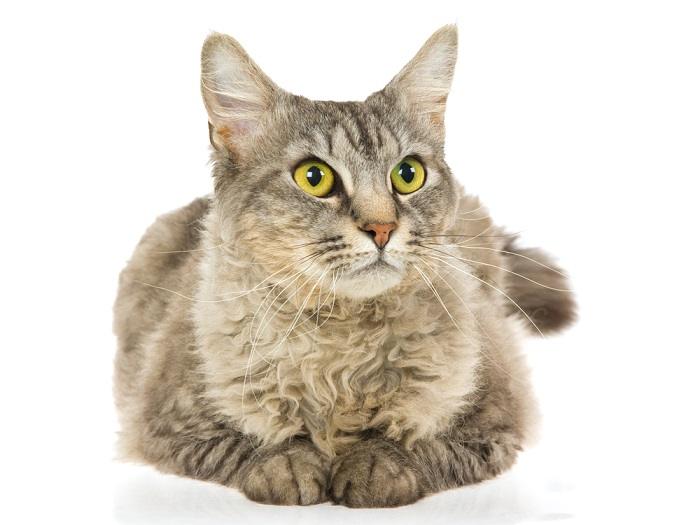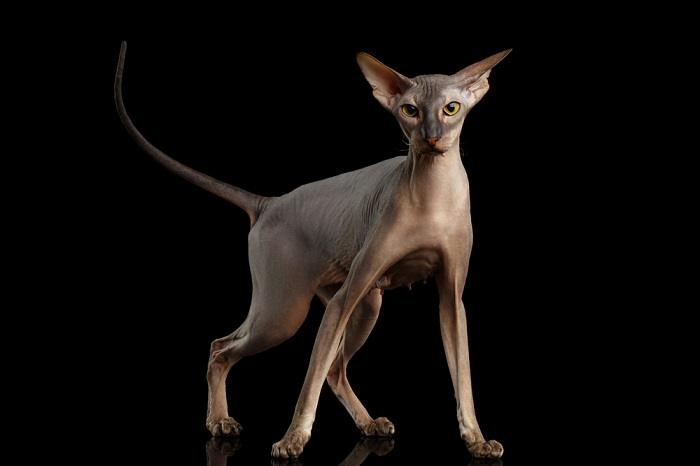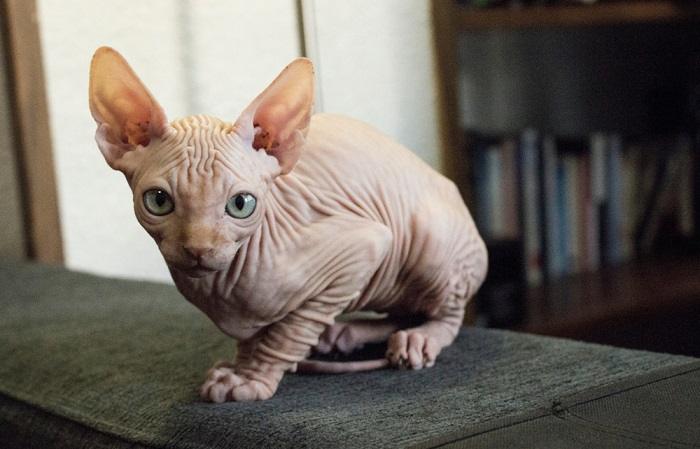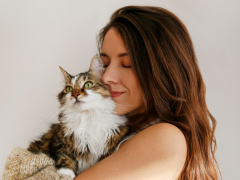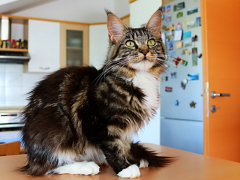In most cases, shedding is an inevitable part of cat ownership. It’s possible to stay on top of the cat hair situation with some tried and true methods, for instance, brushing and grooming your kitty regularly to remove dead hair from the coat, frequent vacuuming, and using lint rollers on clothing and furniture. Most cat owners happily deal with a bit of cat fur in return for the joy of living with cats.
With exception of the hairless breeds, all cats shed in some form or another. Some cat shed so little it’s as if they don’t really shed at all. Other cats shed so much that it’s difficult to keep things pristine and you must become comfortable with car hair on everything.
Some people love cats but just don’t love the hair. In these cases, it’s best to look for a low shedding cat breed. Hairless and low shedding breeds are your best bet if you don’t like the idea of cat hair everywhere.
Also Read: How To Reduce Cat Shedding In 9 Simple Steps
Is There a Breed of Cat That Doesn’t Shed?
If you’re looking for a low shedding cat breed because you suffer from allergies, remember that it’s not necessarily cat hair that causes allergic reactions but cat dander. Humans with cat allergies react to a protein cats produce called Fel d 1.
This protein is present in the cat’s saliva, urine and skin cell. Cat dander consists of tiny bits of dried saliva and skin cells that flake off the cat’s body. Dander clings to cat hair, so the dander is present on the cat and also spreads throughout the house when the cat sheds.
Low shedding cats might not necessarily hypoallergenic cats. If you have cat allergies, but hope that a low shedding cat breed might work for you, make sure to spend some time with adult cats of the breed you are considering before bringing a kitten home. Visiting the breeder’s home cattery can often give you a good idea if you will be able to live with a low shedding cat breed.
A handful of cat breeds recognized by the Cat Fanciers Association and The International Cat Association are considered low shedding. Let’s meet 9 breeds that shed very little (or not at all!).
Also Read: Cat Dander: Allergies, Removal and Treatment
#1 Abyssinian
Unlike many shorthaired cats, the Abyssinian sheds very little.
Unlike some other shorthaired cat breeds, the Abyssinian has a short hair coat that naturally sheds very little. The Abyssinian’s ticked coat comes in four colors (ruddy, cinnamon, blue and fawn).
The ticking pattern, which is called agouti, consists of two to six different bands of color on each individual hair, with lighter bands at the root and darker bands at the tips. The soft, silky, fine coat is easy-care, requiring occasional brushing with a soft slicker brush.
Also Read: Best Robot Vacuum Cleaners For Pet Hair
#2 American Wirehair
The American Wirehair’s crimped coat doesn’t shed much.
The American Wirehair is related to the American Shorthair, but it has a very different coat. As its name suggests, the American Wirehair has a hard coat with a wiry texture, similar to steel wool.
The hairs are crimped and coarse, so any hair that sheds is generally caught up in the coat rather than shed into the environment. To prevent matting, and to keep the skin and coat clean, the American Wirehair should be brushed regularly to remove loose hairs caught up in the coat.
Also Read: Repetitive, Excessive And Compulsive Grooming In Cats
#3 Bengal
The Bengal’s short, sleek coat sheds less than you might guess.
Like the Abyssinian, the shorthaired Bengal cat has a coat that naturally sheds very little outside of a seasonal shedding of the winter coat, which happens in spring. This short shedding period can be hastened with daily brushing to help remove the loose hair.
The soft, sleek coat may be spotted or marbled, and the Bengal is the only cat breed with rosettes that look like the markings found on wild cats like leopards, jaguars and ocelots. Some Bengals has “glitter,” which is certain type of hair that reflects light and makes the cat look as though it has been sprinkled with pixie dust.
Also Read: Best Cat Grooming And Deshedding Gloves
#4 Cornish Rex
The Cornish Rex’s hair is extremely short and soft like chenille.
The Cornish Rex has a unique, short, wavy coat that feels similar to chenille. The coat is soft and silky, and sheds very little. Another bonus to this unique “washboard” coat is it requires very little in the way of brushing, though the breed should be bathed a little more frequently than most cats due to its tendency to become a little greasy (especially the paws and ears).
After bathing, all you need to do to dry the coat is a quick rub down with a soft towel—the cat will then air dry in no time.
Also Read: 15 Best Cat Foods For Shedding
#5 Devon Rex
The velvety coat if the Devon Rex drops almost no hair.
The Devon Rex is a dainty little cat with a short, wavy coat that feels like velvet. The coat can vary amongst individual cats, with some Devon Rex sporting a coat of loose curls and others with coats resembling suede.
Though the Devon Rex does shed, it’s a very small amount of shedding compared to other breeds. The coat is easy to groom, requiring just occasional brushing. Devon Rex are fun to cuddle as they are very soft and warm, like purring water bottles.
Also Read: Best Air Purifiers For Pet Hair, Dander, Allergies And Odor
#6 Donskoy
Whether partially hairless or fully bald, the Donskoy sheds very little or not at all.
The Donskoy is a Russian breed with a very unique coat. Some Donskoy are born hairless and remain hairless (called Rubber Bald). Some are born with very fine hair like chamois (called Flocked). Flocked Donskoy may keep this fine hair or become hairless. A third type of Donskoy is called Velour.
These kittens are born with a wooly coat and a bald spot on their head; they lose their hair in the first year of life to become bald, though they might retain a bit of hair on the face, legs, and tail. The fourth type is called Brush, a partially hairless coat. Regardless of coat type, most Donskoy shed very little or not at all, though hairless cat need weekly baths to remove oils on the skin.
Also Read: 5 Hairless Cat Breeds That Prove Bald Is Beautiful
#7 LaPerm
Don’t be fooled by the fluffy looking coat—the LaPerm hardly sheds at all.
The LaPerm’s soft rexed coat forms shaggy curls and ringlets and sheds very little. The breed comes in shorthaired and longhaired varieties, though both hair types are easy to care for. The The LaPerm has low-maintenance grooming needs.
Bathing and brushing is not usually recommended since the coat is supposed to look a bit unruly. Of course, a bath or brushing may be needed if the coat because dirty or tangle, though combing with a wide-toothed comb generally keeps the coat in good shape.
Also Read: Common Skin Problems In Cats: Causes and Treatments
#8 Peterbald
The hairless or nearly hairless Peterbald doesn’t shed at all.
The Peterbald is another Russian breed that can be hairless or nearly hairless, with a very fine, peach fuzz coat. The Peterbald is a new breed, created by breeding a Donskoy (originally called Don Sphynx) with an Oriental Shorthair. As with the Donskoy, the Peterbald’s hair coat varies amongst individual cats.
Some Peterbald kittens are born hairless and remain hairless; others are born with hair and lose it later. Some kittens are born with hair and keep it. Hairless and nearly hairless Peterbalds shed very little or not at all. Hairless Peterbalds need baths every other week to keep the skin oils under control.
Also Read: How To Bathe A Cat
#9 Sphynx
The Sphynx is a good choice for people who want to completely avoid cat hair.
The original hairless cat breed, the wrinkled, soft Sphynx cat does not shed at all. The breed was developed in the 1960s when a hairless kitten was born to a black-and-white cat in Ontario, Canada.
Most Sphynx are covered in a fine down that makes them feel like warm, soft suede or chamois. Although Sphynx require no brushing, they need to be bathed every few months to keep the skin soft and healthy.
Also Read: 200+ Hairless Cat Names: Unique Ideas For Bold Cats
Frequently Asked Questions
What type of cat hair sheds the least?
Cats with wavy, curly, or wiry hair tend to shed very little, and the hair that does shed is caught up in the hair coat, where it remains until it’s removed by brushing. Hairless cats and those that are nearly hairless (with a peach fuzz coat) do not shed at all. Some breeds that tend to shed less include the Abyssinian, American Wirehair, Bengal, Bombay cat, Burmese cat, rex cats (like the Cornish Rex and Devon Rex), Donskoy, LaPerm, Peterbald, Siberian cat and Sphynx cat.
What cat breeds shed the most?
Any cat breed has the potential to shed. Although longhaired cats are notorious for shedding, shorthaired cats shed more than you might think. Cats with wavy, curly, or wiry hair usually shed very little, and hairless cats don’t shed at all.
What breed of cat does not shed hair?
Hairless cat breeds, including the Donskoy, Peterbald, and Sphynx, do not shed hair at all.
